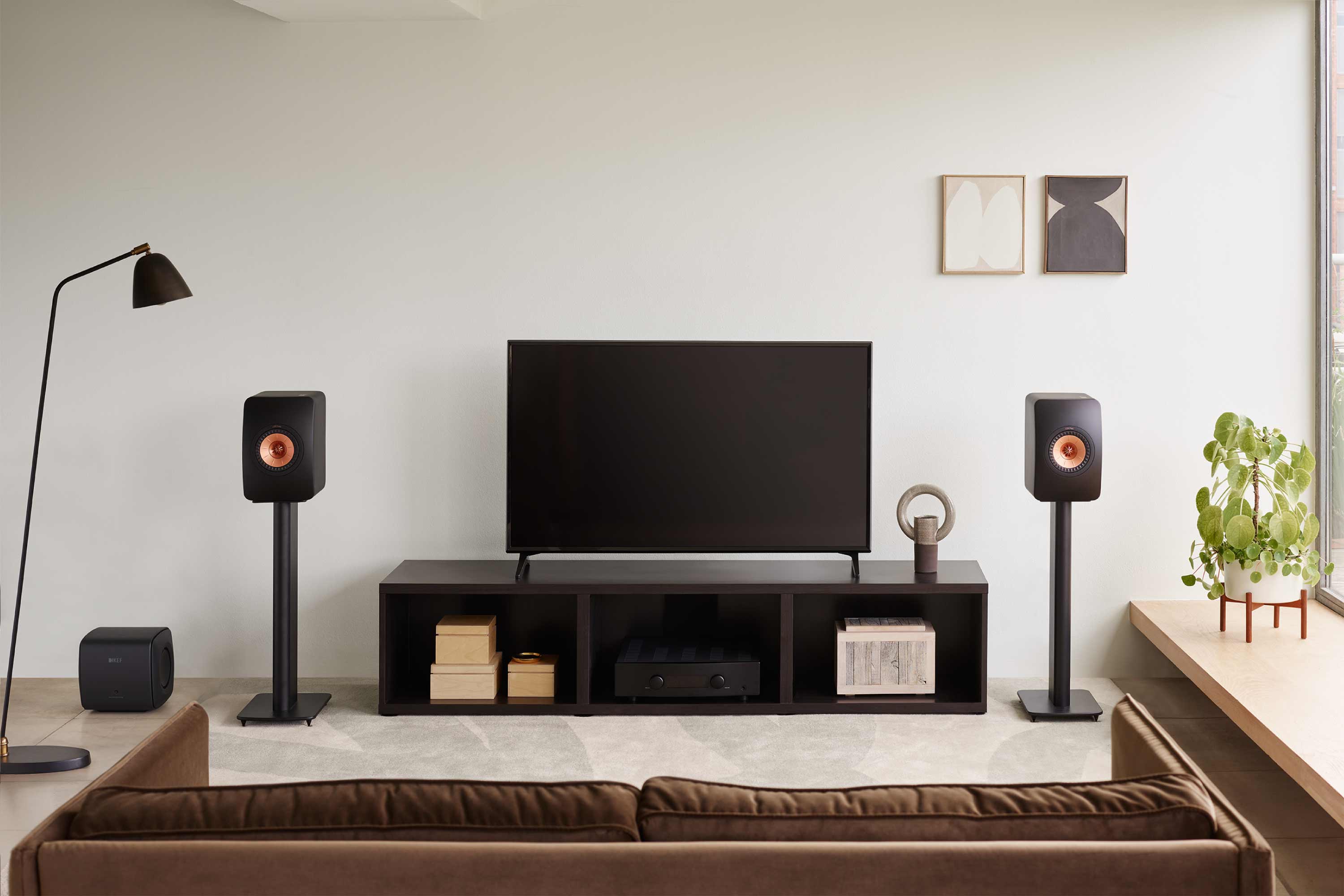Use Your AVR’s auto-setup routine
Most modern AVRs (audio-video receivers) have a built-in room setup app that will do most of the hard calculations for you. To get the best response from your AVR’s setup programme, position the included microphone on a stand or tripod in your main listening area with no obstructions around it – then leave the room while the programme runs. Sophisticated programmes will require this for each listening position. This also applies if you are using a stand-alone room setup app such as Audyssey.
If you have to enter them manually, be as accurate as possible when providing the distances of each speaker into the setup program. With accurately set distances, sounds that are supposed to come from different places at different times will be processed to arrive at your ears at exactly the right time. For example, a helicopter flying from the rear to the front of your room will sound more cohesive if the distances between the rear and front speakers are accurately set. If the distances are not accurate the sound may become disjointed or disconnected from the video material.
Of course, once you’ve run the setup programme, feel free to experiment to get things dialled in to your taste. You can always run the programme again to recover the system-calculated settings if you get too far into the weeds.



Set the Volume Properly
We all love massive amounts of bass. But too much bass is, well, too much! Set the amplifier on the subwoofer (Gain Control) to around 75% and play a song or a scene from a movie you are familiar with (and that has lots of bass). On your AVR’s control menu, set the subwoofer output all the way down (infinity). Slowly adjust the subwoofer gain to the point where you can hear the bass begin to fill in the bottom end. THEN STOP! That’s it, that’s all the bass you need. It may not be all the bass you want but that’s a personal choice. A properly set up subwoofer will not call attention to itself (meaning you are not directed to the box itself when listening to low frequencies) but will instead be non-directional with bass just filling up the room from seemingly all directions. Keep in mind, when a song or soundtrack to a film is mastered, the engineers and directors put in the amount of bass they feel is necessary – in relation to all of the other frequencies – to convey the message or emotion of the passage. If you’ve set the subwoofer volume properly it will be full and subtle and will integrate with the entire programme or passage as intended.
You can tweak the Gain control of AVR menu setting to dial the subwoofer to your personal choice, but the above steps give you a great foundation for proper subwoofer integration.



Set the Crossover Properly
George Lucas and his merry band of geniuses over at THX set the standard crossover frequencies for movies and theatre at 80Hz. In almost every case, that frequency will work just fine. However, if you want to tweak a bit to suit your tastes, or get the most out of your speakers, here are a few simple rules to follow:
If you look at the specs for your speaker you’ll see two different low-frequency specifications, -3dB and -6dB. The -6dB frequency is the point at which the speaker loses its useable low-frequency response. There will still be frequencies present below this setting, but they will be diminished to the point they are lower than frequencies above that point. The -3dB frequency is the point at which frequencies begin to gradually diminish – they’ll still be there but slightly lower in volume. As you move lower from the frequency, the greater the decrease. The -3dB frequency is the frequency you want to use when setting your subwoofer crossover. Some will say you should set the crossover point 10% above that -3dB frequency, but with decent quality components, it’s really a matter of taste rather than a hard and fast rule. Again, find the suggested crossover setting and experiment from there.
If you hear an unnatural bump at frequencies around the crossover setting, try lowering the crossover point. Conversely, if you notice a definite loss of frequencies around the crossover point try raising the filter-point. In either case, a few Hz either way should do the trick.
Set the Phase
As with everything else in the audio world, it’s really all a matter of taste. You may just want to bask in the glory of rafter shaking bass but if you want a seamless integration of all of your speakers these tips may help you get even more enjoyment from your system.



